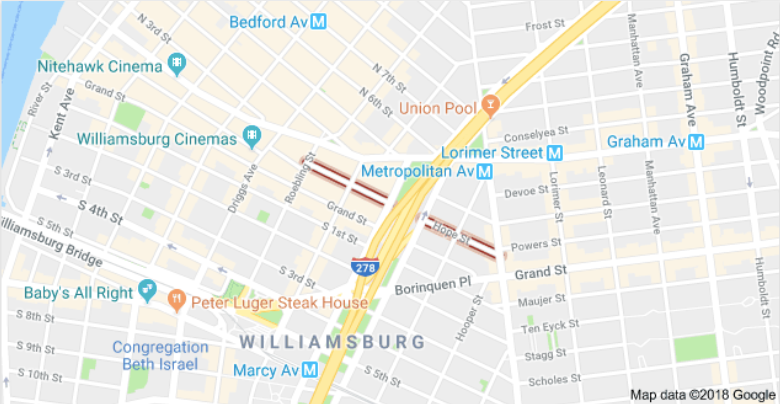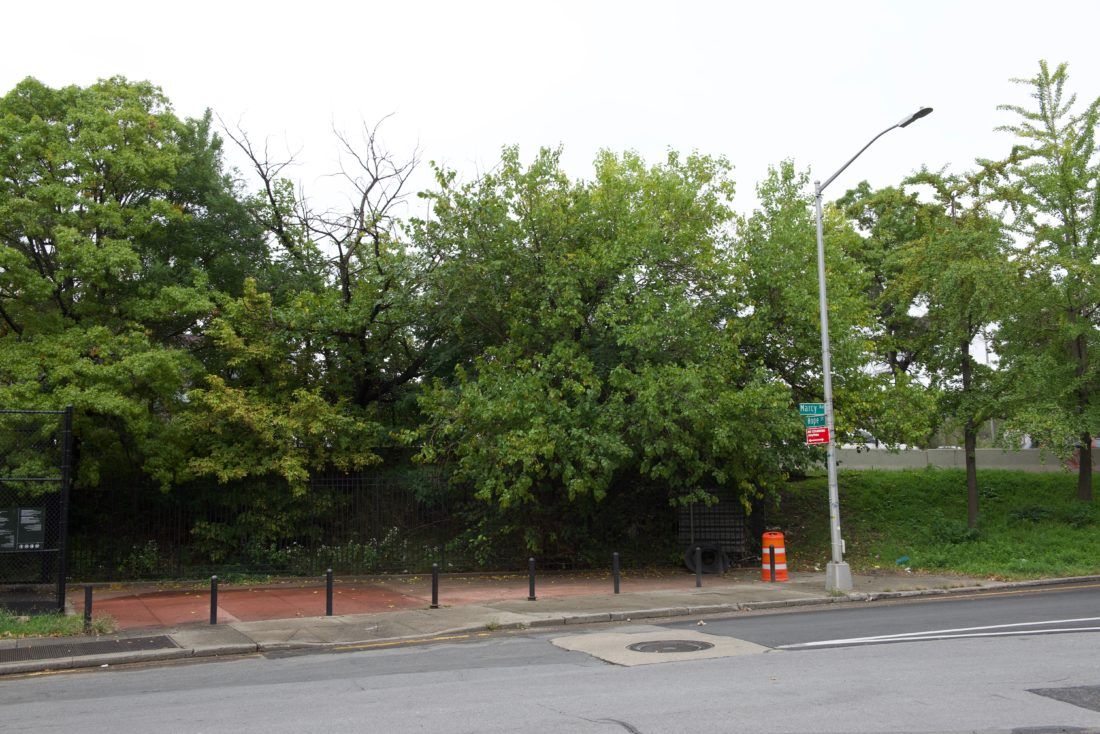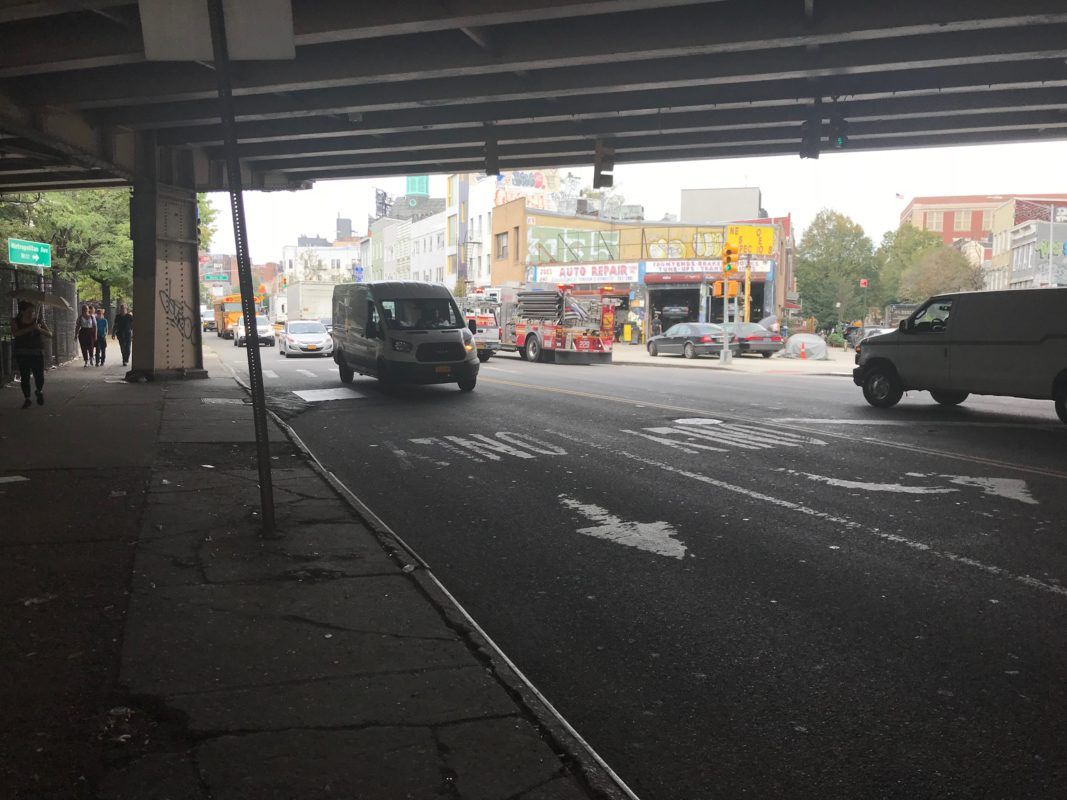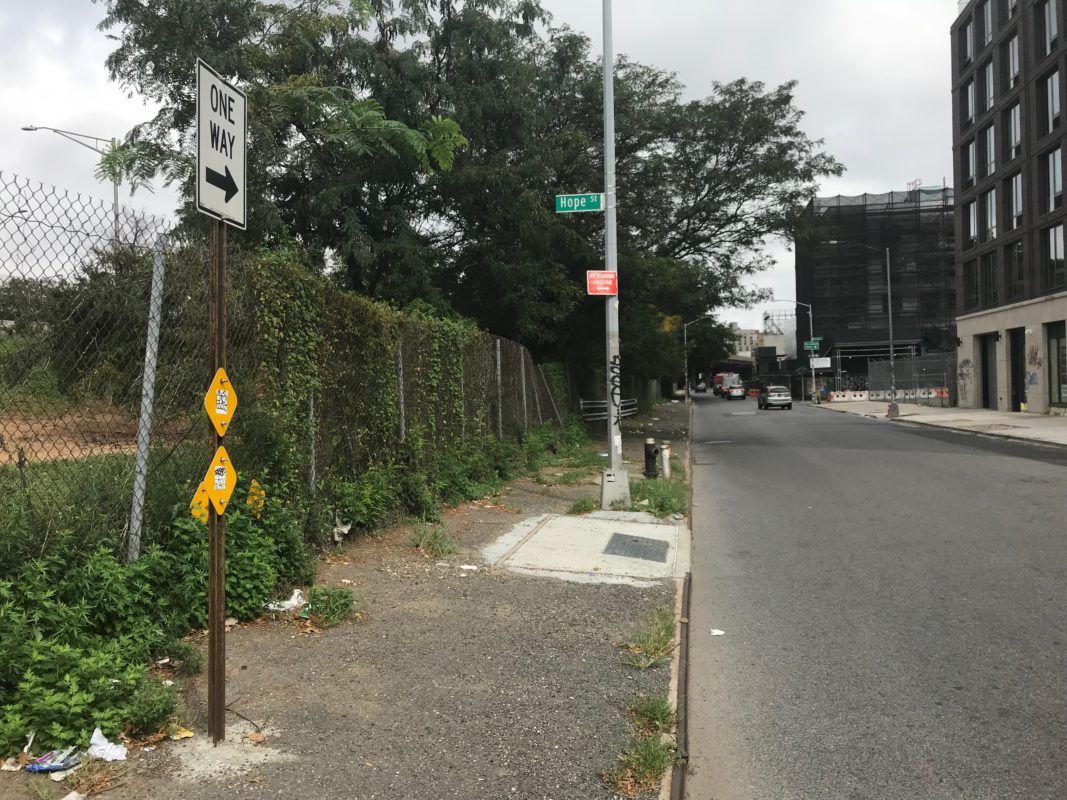Proposal For A New Hope Street Underpass Galvanizes Williamsburg Residents


WILLIAMSBURG – Local residents looking for a better way to cross the BQE on foot into the other side of Williamsburg have come up with a new suggestion: reopen the long-closed Hope Street underpass.
The topic came up at a Community Board 1 meeting last week, suggested by longtime resident Daphne Fitzpatrick, who has lived on Hope Street since 1994. Fitzpatrick remembered the underpass from the 90s, when local residents were able to quickly cross under the BQE in a pedestrian-focused space, away from traffic.
“We used it all the time—it was run down, but I remember it fondly,” Fitzpatrick said.

Since the closure of the underpass in the mid-90s, pedestrians have used Metropolitan Avenue to cross between the two sides of the neighborhood, but traffic underneath the BQE at Meeker Avenue and Rodney Street is heavy, with 18-wheeler trucks rumbling along just feet from the sidewalk.
“That walk is horrible,” said Fitzpatrick, whose concerns about traffic were heightened by the arrival of a baby. Pushing her 7-month-old son in a stroller along Metropolitan past the lanes of rushing traffic, she recalled the Hope Street underpass and wondered why it couldn’t be reopened.

Additionally, with the upcoming closure of the Canarsie Tunnel, L train riders that used to board at Bedford Avenue will be walking east, looking for a connection to the G train and access to alternate lines—a key part of the MTA’s mitigation strategy.
The MTA plans to open up a closed entrance to the Metropolitan G at the corner of Hope and Union Avenue to increase station capacity—and if an underpass were created, it’d be a straight shot across and into the station for west Williamsburg commuters.
Surprisingly, as anyone that’s attended a Community Board meeting almost anywhere in New York can attest, the reaction from both board members and the audience was almost overwhelmingly positive. Many residents remembered the underpass and were encouraging of the proposal. A suggestion was made to pitch the idea for Participatory Budgeting.
Some of the older residents weren’t happy with the idea—citing the area as a hotbed for crime in the 60s and 70s. Others acknowledged their concerns, but pointed out that Williamsburg is a very different neighborhood in 2018 than it was twenty years ago—much less forty or fifty.
Lately, New York City officials have touted the city’s current status as the safest big city in America at every opportunity. Last week, NYPD Captain Skretch announced that his command, the 90th Precinct, had posted the largest drop in crime citywide in the latest 28-day reporting period.
Of course, even if funding and crime weren’t concerns when digging a new tunnel, the main question is feasibility: can it even be done?

According to the New York State Department of Transportation (NYSDOT), the underpass was filled in during the Meeker Avenue Viaduct Reconstruction Project that wrapped up in 1996.
“Today [the underpass] helps maintain the structural integrity of the highway,” an NYSDOT spokesperson responded via email, adding that, “Metropolitan Avenue is close by and is regularly utilized by pedestrians.”
Still, twenty years on, Williamsburg residents plan on following up on the idea. Community Board 1’s Transportation Committee is planning to discuss the proposal at their next meeting, Fitzpatrick said, and invited her to attend.
She’s also planning to email local City Councilmember Antonio Reynoso, who she thinks will have the most power to get the ball rolling on a proposal.
“The underpass makes so much sense,” she said. “You could avoid Metropolitan and get to the other side in a pleasant, more convenient way.”
Fitzpatrick envisions an improvement from the damp and smelly tunnel she remembers from the 90s, thinking now of an attractive, well-lit project.
“When they build things now, they’re better than ever,” she said.




